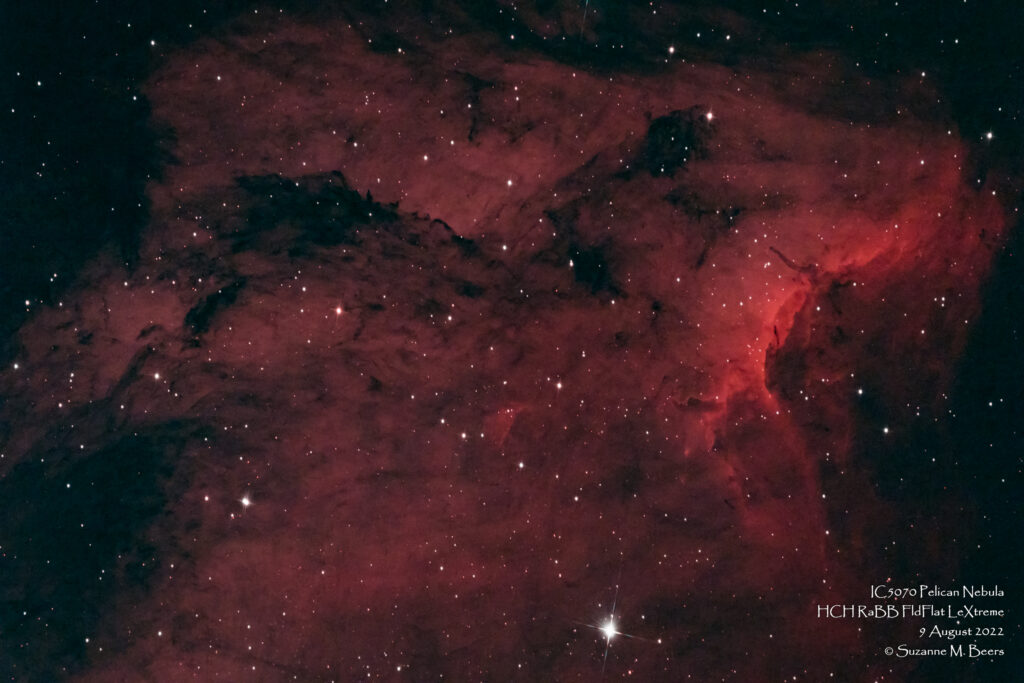
Fun facts
The IC5070 Pelican Nebula is an H II region associated with the North America Nebula in the constellation Cygnus. The gaseous contortions of this emission nebula bear a resemblance to a pelican, giving rise to its name. The Pelican Nebula is located nearby first magnitude star Deneb, and is divided from its more prominent neighbour, the North America Nebula, by a foreground molecular cloud filled with dark dust. Both are part of the larger H II region of Westerhout 40.
The Pelican is much studied because it has a particularly active mix of star formation and evolving gas clouds. The light from young energetic stars is slowly transforming cold gas to hot and causing an ionization front gradually to advance outward. Particularly dense filaments of cold gas are seen to still remain, and among these are found two jets emitted from the Herbig–Haro object 555.[1] Millions of years from now this nebula might no longer be known as the Pelican, as the balance and placement of stars and gas will leave something that appears completely different.
Other Catalog Designations: IC 5070 and IC 5067
Subtype: Emission Nebula
Distance from Earth: 1800 light years
Visual Magnitude: 8
Apparent Dimensions: 60′ x 50′
Constellation: Cygnus
{ from:https://en.wikipedia.org/wiki/Pelican_Nebula }
Equipment
Polar alignment: QHYCCD camera (controlled by Polemaster)
Imaging stream: Orion 8″ f/8 Ritchey-Chretien Astrograph Telescope; Canon EOS Ra with with Teleskop Service Flattener 1.0x for RC Telescopes (TS-RCFLAT2) and Optilong L-eXtreme light pollution filter
Mount: Sky-Watcher EQ6-R Pro Equatorial Mount (controlled by EQMOD)
Autoguider: Orion 60mm Multi-Use Guide Scope, Orion StarShoot AutoGuider Pro Mono Astrophotography Camera (controlled by PHD2)
All equipment controlled by HP Probook running Sequence Generator Pro v3.2.0.660.
Capture & processing notes
Sequence plan: ISO1600; 66x300sec; captured 9Aug2022 2154MDT – 10Aug2022 0348MDT. Total exposure time: 5:30hrs
Capture: 9 August 2022
Shooting location: Colorado Springs, Colorado
Processing: Stacked with Astro Pixel Processor (APP). Processed in LR/PS.
